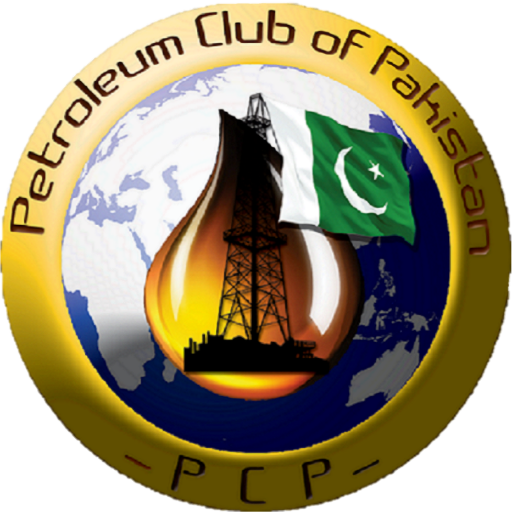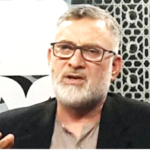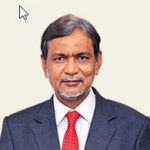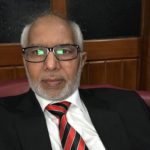
Dr.Shahid Rahim
Freelance consultant, specializing in sustainable energy and power system planning and development
Electricity rates in Pakistan were raised recently by a hefty Rs. 4.96 per unit by the government to meet an IMF condition for securing its latest bailout package. While consumers were struggling to swallow this bitter pill for the sake of saving our country from an impending financial default, the media is again abuzz with the news of another hike by Rs. 2.31 per unit in the name of fuel price adjustment. These frequent and heartless rate hikes make it evident that our government does not have any new or viable solution to deal with the power sector issues other than squeezing the helpless consumers who are already drowning under the burden of an endless streak of electricity rate hikes.
Reports from multiple sources indicate that electricity rates in Pakistan are already among the highest in the region. Some analysts blame the pervasive inefficiencies and poor management in the power sector to be the root cause of this issue. This writer tends to differ with such views. Efficiency and management within the power sector must improve, no denying, but these steps alone will not rid the power sector of its root ailment. A new vision coupled with a systemic overhaul of this sector is essential to save it from sinking and to transform it into a viable contributor to our economy and people.
The problem with higher electricity rates is that it stifles both human growth and economic development. These rates, if exceed the affordability limit of citizens (normally below 10% of their income), adversely affect their quality of life, compelling them to compromise on food, education,
and health. They are also compelled to use traditional fuels which affect their health and safety. High electricity rates also hurt the competitiveness of agricultural consumers, commercial businesses, and industries, forcing them to seek alternatives, shift elsewhere, or in extreme cases, closedown.
It is, critical that we eliminate the primary causes of our “higher-than-normal electricity” rates and take measures to ensure the provision of affordable, secure, and sustainable power supplies to our people and economy in the future.
The primary cause of the higher electricity prices in Pakistan, in this writer’s view, is our over-reliance on central-station power supply system which is largely based on imported technologies and fuels. This has led to supplies which are prohibitively expensive, inequitable, and unsustainable.
However, no amount of rumination will reverse the decisions taken in the past. We must now focus on seeking a course that will mitigate the adverse effects of past decisions in the short run, eliminate these causes in the medium run, and shift to affordable and sustainable electricity supplies in the long run.
The whole power sector edifice is built upon a single premise—electricity demand will evolve within a tight band of forecasts. Any significant deviation from the forecast can render the system either with over-or under-capacity, each with its own cost. We hear some experts emphasize that we need more accurate forecasts. Yes, we did, but only if the world around us were stable. Energy markets around the world are in constant flux. The patterns of consumer demand, its spatial and temporal distribution, consumers’ ability to pay, and their tolerance to supply interruptions, all have acquired more importance than the accuracy of demand forecasts at the national level alone.
A fatal flaw in our current planning practices is use of GDP growth as the key driver of future electricity demand. The myth of a direct link between the GDP and electricity demand has already been debunked in other countries, but in Pakistan we continue to believe in it. As a developing
country, we may expect some positive correlation between our GDP growth and electricity demand but assuming a one-to-one link between the two and building a monolithic and capital-intensive supply infrastructure around this assumption will be suicidal for a country that is struggling to find customers for its already installed capacity.
Pakistan’s power sector faces an existential threat at present. It can continue to follow the traditional path—serving all demand for electricity through centralized grid—or adopt a flexible and agile approach by accepting that electricity consumers are no more captive to its outdated power supply system and a dumping ground for the costs of poor policies, mismanagement, and inefficiencies of the past. Consumers now have multiple choices for managing their demand and meeting it via other non-grid but competitive options. Installing PV systems on their roofs or in a
nearby location with some storage is just one such option.
Electricity supply through the national grid can still be a desirable and cost-effective option for most electricity consumers in the country provided our decision-makers are willing to change their old mindset that considers electricity to be a privilege they provide to consumers and can charge them
any price they wish. They will have to consider it as just another product or service which consumers will select based on its quality and price. If they are willing to make this mental switch, options to have a gainful relationship between the suppliers and consumers of electricity abound. Otherwise, this sector is destined for ruin.
Pakistan’s power sector problems are acute, chronic, and have accumulated over decades. They are also multi-faceted and not restricted to any one aspect of the sector. These issues are causing huge loss to the country that topped Rs. 530 billion last year (State of Industry Report 2022, NEPRA). They all, however, have culminated into feeding the monster, “the higher-than-normal electricity prices”. If this monster is not checked and tamed timely, it will soon grow into a fearsome Frankenstein.
There is. however, no easy way to pull the power sector out of the present quagmire. An iron political will and a carefully crafted reform program will be needed to plug the bleeding holes in the short run and a treatment spread over medium to long run to heal it back to full health and vitality.
Remedies for the short run
First, mind the old English saying: “If you find yourself in a hole, stop digging”. The first step to stabilize the patient (power Sector) will be to stop further aggravating his disease. So, no more contracting of large-sized and high-upfront cost power generation projects, conventional or non-conventional, through long-term power purchase agreements (PPAs). In the changed, and still changing, energy marketplace, 3 to 5 years is a long-term now. Making any commitment beyond this period would carry high risks which we must avoid.
Second, use the standard economics principle of spreading the existing high fixed costs of the previously contracted projects by expanding the existing revenue base and embracing new demand by offering incentives. Many existing consumers may not have defected the grid or reduced the electricity drawn from it for higher monthly bills alone. Excessive interruptions or poor service quality might have compelled them to do so. These alternatives may still be inefficient and more expansive than the grid supply. So, find the reasons behind their frustration and win them back by
addressing their grievances.
According to a World Bank report, 25% of our population still lack access to electric supply. NEPRA’s State of Industry Report 2022 puts the total pending connection applications in the country at 176,829 with a cumulative demand of 1,215 MW. The unserved demand in the NTDC system, according to its Power System Statistics 2022 report exceeded 6,700 MWs during peak hours. So, the demand is there, it’s for the government to encourage it to come on the grid.
Third, improve the current system operation practices to squeeze additional capacity and energy out of the existing generation and T&D facilities and relieve any existing constraints. Lack of access to real-time data may not be enabling system operators to use the existing T&D facilities to their full limits. Such data access could permit them to improve their use, thus enabling them to enhance power transfer capability through these networks and dispatch generation, as much as possible, to its true economic potential.
Fourth, put “Net Metering” on a pause for a while. It’s a good scheme to promote renewable power in the country, but under the present situation in which demand on the grid is rapidly eroding, its aggressive promotion would exacerbate an already serious situation. Continue it but revise the
applicable tariff and other TORs for new “Net Metering” customers to recover fixed costs of the legacy grid facilities from them. Also consider imposing of a reasonable “Grid Exit Fee” and “Advance Notice” for new applicants for “Net Metering” arrangement.
Remedies for the medium run
First, In the medium-term (next 3 years), avoid building any new central-station power plants and T&D systems. Plan to serve any new electricity demand, as much as possible, by squeezing additional capacity and energy out of the existing systems through grid modernization and locating distributed renewable power generation as close as possible to the load centers. The SCADA (supervisory control and data acquisition) system is already under upgrading. Reinforce it further by deploying a state-of-the-art automatic generation control (AGC) system and energy management system (EMS). Jointly, these can enable our system operators to monitor and control the system in real-time and squeeze maximum value from the existing assets.
Second, conduct fresh surveys to create a database of each consumer by collecting details of his connected load, pattern of electricity usage, his plans to add or modify his loads, his present or expected reliance on alternative options. Use this information to devise future tariffs by making a
shift from the present volumetric (kWh) rates to segregating the tariff into a fixed monthly capacity charge and variable energy charge. As 50% of the electricity consumption in the country at present is from residential consumers, it will help recover the sunk costs from the consumers who use grid largely as a backup and will also avoid shifting these costs to the remaining consumers.
Third, understand demand and its patterns within the industries, especially their use of captive power facilities and other fuels for industrial processes that can be converted to electricity. Start a campaign to win back the consumption that has switched to captive plants. Also, seek new demand that can be served within these industries from grid supply. Be willing to offer reasonable incentives to these consumers if their long-term benefits exceed their short-term costs.
Fourth, turn the power system planning on its heals. The traditional approach consists of aggregating forecast demand in the country and meeting it through a least-cost sequence of generation and transmission and distribution (T&D) capacity additions. Bigger is no more “better or cheaper”, as small, distributed, and renewable power technologies now offer feasible options to serve demand at or near the source. So, shift the point of business-case evaluation, from generation terminals (busbars) to the distribution substation.
Remedies for the long run
The whole power sector will require a thorough revamping and overhaul—its system, its regulation, its institutions, its business model, and its investment and pricing schemes. These can only be accomplished gradually, with patience, and over a long run.
NTDC’s latest Indicative Generation Capacity Expansion Plan (“IGCEP2022-31”) envisages 35,567 MW of new generation capacity to cater to peak demand of 41,338 MW and 8,021 MW of to-be-retired capacity by FY2031, raising the total to 68,667 MW. This indicates a “reserve margin (excess installed capacity as a proportion of peak demand)” of roughly 66%. The cost of this capacity is estimated to be around USD 53 billion. As typically 60% investment in the grid goes to generation, 15% to transmission, and 25% to distribution. The total cost for the whole system can easily top USD 90 billion. It’s fearsome for multiple reasons and our planners and decision-makers must revisit it by considering other less capital-intensive options. A few may include:
First, serving the future electricity demand in the country through distributed and renewable generation should be a prime consideration for our government and NEPRA. The cost of serving one megawatt of demand at or near its source helps avoid 1.5 to 2 megawatts of capacity upstream if we count all the costs from generation to consumer end. For a few megawatts of demand, it may not matter much, but if seen in the context of USD 90 billion needed to serve the demand by 2031, the avoided cost potential acquires a serious meaning which must not be left to traditional planning.
Second, 15% investment in transmission system may appear insignificant in the overall supply portfolio, but it is the most critical part, as a solid, robust, and resilient grid provides backbone to the whole system. This is because it contributes significantly to optimizing generation requirements and then enabling their operation in the most efficient, reliable, and economic manner. Modernizing the grid by deploying intelligent and smart grid technologies, with only a fraction of the overall cost, can help avoid a substantial portion of the investment required otherwise.
Third, 15 to 20% “reserve margin” is just normal in the electric supply industry but the IGCEP2022-31’s figure of 66% is way too high. This may have been to cover the intermittency and variability of the “30% by 2030” target for renewables. This should be an eye-opener for our policy makers, as it reveals the serious consequences of setting targets without proper studies. Renewable power generation is a highly cherished goal but developing it exclusively via the central grid may not be the best policy. It must be pursued after careful studies. It should be left to systems planners to determine the most appropriate sequence and avenue for their uptake.
Last but for from the least, the fundamental feature of a viable future power sector in Pakistan will be developing of a liberal legal, policy, and regulatory framework. Its availability can transform the currently dysfunctional power sector entities into an agile and nimble set of system operator and T&D service providers. These operators and service providers must not have any interest in the sector. They should only provide a facilitative platform to a host of diverse and disparate market actors to exchange their products and services through the grid in a competitive market that enables settling prices for these strictly in accordance with the value these provide to customers.
The remedies for the short run will only help stop the patient’s bleeding while those in the medium run will acclimatize him for the main surgery that can be performed best only in the long run (beyond 3 to 5 years). Settling future electricity prices through an efficient and smart grid and in a competitive market will take the sting out of the monster and gradually neutralize it. More than anything, it will prevent it from growing into fearful Frankenstein.






















